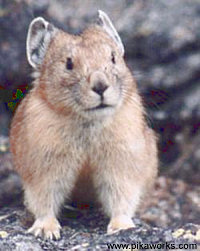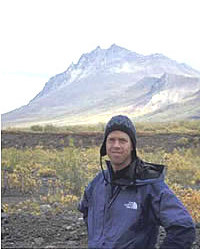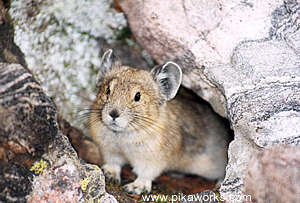Global warming may be giving our tiny furry friends trouble!
|
The World Wildlife Fund is concerned about the implications of these results and has widely publicized them. The story has been popping up in newspapers and online papers and e-newsletters around the world. The article from the February 26th issues of the Los Angeles Times is reprinted with permission (LATimes). Previous research results suggested that American pikas are particularly vulnerable to global warming because they reside in areas with cool, relatively moist climates like those normally found in their mountaintop habitat. As temperatures rise due to increasing emissions of CO2 and other heat-trapping gases, many montane animals are expected to seek higher elevations or migrate northward in an attempt to find suitable habitat. Living essentially on high-elevation islands means that American pikas in these regions have little option for refuge from the pressures of climate change because migration across low-elevation valleys represents an incalculably high risk - and perhaps an impossibility under current climate regimes - for them. Results from the new study suggest that climate may be interacting with other factors such as proximity to roads and smaller habitat area to increase extinction risk for pikas, creating detrimental synergistic effects. "American pikas may unfortunately be the 'canary in the coal mine' when it comes to the response of alpine and mountain systems to global warming," said Dr. Lara Hansen, senior scientist, World Wildlife Fund Climate Change Program. "Their disappearance is an indication that our heavy reliance on polluting fossil fuels is causing irreparable damage to our environment. We must make the switch to clean renewable energy resources like wind and solar now before it's too late." Erik Beever says that there are a number of reasons why he chose to study pikas rather than other mammal species. "In addition to their charismatic appeal with the general public, pikas turn out to make an excellent study system." " In contrast to most other mammals which are nocturnal or crepuscular (active at dusk and dawn), pikas are mostly diurnal (active during the day), which facilitates their observation without the need for infrared-based optics or track plates. "Secondly, pikas are not secretive and difficult to find, as are many other mammal species. American pikas live almost exclusively in talus or talus-like habitats, making searches for them much easier. "Furthermore,
because pikas use vocalizations to communicate territory boundaries
and for several other functions, they'll generally inform "intruding"
researchers of their presence once humans step onto taluses. "Work during the 1970's by Andrew Smith demonstrated pikas' vulnerability to high temperatures." David Hik has also reported plummeting collared pika populations during the warm winters from 1998-2000 in the Central Yukon. The dense, insulting fur of pikas provides excellent wamth for them during periods of extreme or prolonged cold temperatuers, but this fur also contributes to pikas' inability to withstand increased temperatures.
1/ Beever, E.A., Brussard, P.F.and Berger,J. 2003. Patterns of apparent extirpation among isolated populations of pikas (Ochotona princeps) in the Great Basin. Journal of Mammalogy, 84 (1): 37-54. 2/ The Great Basin includes most of Nevada and parts of surrounding states.
|
| All Designs |
|
| Art Gallery |
|
| Originals/Giclee |
|
| Pikas |
|
Home |
About
Pika Works | Privacy & Policies |
Links | Licensing
| Contact Us |



